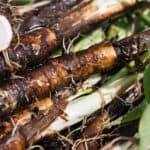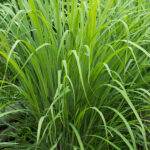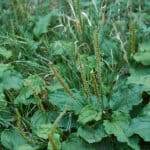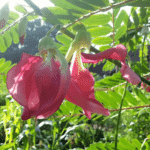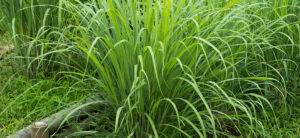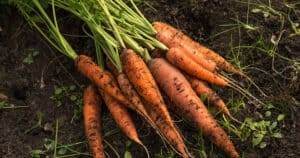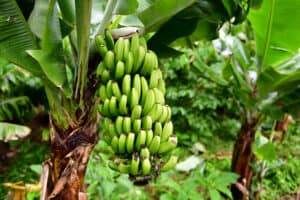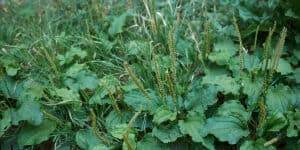Each Spring, radishes deliver us from the land of salad greenery (spinach, arugula, lettuce, kale, etc) into the wide world of colorful crunchy vegetables. Their bright hues, spicy flavor, and crisp juicy texture make radishes a popular addition to the dinner table and the farmers market stand. They’re also a great choice for the home garden. Radishes take up little space in the garden, are relatively easy to cultivate, and have a very quick growth period.
Radishes: Quick and Colorful
Radishes are fast-growing annuals in the Brassicaceae family (home to broccoli, kale, and cabbage, among others). As such, they are tolerant to partial shade in the garden. While radishes can be grown year-round in many climates, they suffer in hot, dry weather; their texture becomes pithy or punky, and their flavor can turn so spicy as to be inedible. For this reason, we focus our radish plantings on the Spring and Fall seasons.
We put radishes into two categories: salad and specialty.
Salad radishes include the classic vibrant spheres we know and love (Sora, Crunchy King, Easter Egg), as well as elongated varieties like French Breakfast. They come in colors ranging from pink to white to purple to red, and are often harvested at about quarter to half-dollar size.
The term “specialty” radish incorporates a wider variety of shapes and sizes. This includes the extra-elongated cylindrical daikon, larger round globes like the watermelon radish (green on the outside, bright pink on the inside), and everything in between. These radishes have longer days to maturity, thicker skins, and way more potential as storage vegetables.
Site Prep
Radishes prefer soft, well-drained, loamy soils and part shade – full sun. As fast-growing roots, they do best without the obstacles and interruptions of rocks and stones in the garden. For the larger, deeper-growing radishes like daikon, you may want to spade or broadfork the space beforehand to loosen up the soil.
Radishes also make an excellent companion plant; consider planting them alongside lettuce, spinach, onions, beets, and winter squash. The beauty of these interplants is that the radishes mature quickly, and can be pulled from the patch well before their companions reach full size.
Propagation
Direct Seeding (Recommended)
Radishes can be sown “as soon as the soil can be worked,” which is early Spring (March or April) on our farm in Michigan. They have a minimum germination temperature of 40℉, with an optimum range between 55℉ and 85℉. We have definitely had beds of radishes seeded at that 40℉ soil temp sit stunted; sometimes waiting an extra week or two really does help. To keep a consistent supply of radishes, seed them in successions spaced 3 or 4 weeks apart. In warmer climates, consider taking a seeding hiatus during the heat of Summer. The spiciness and texture of radishes is significantly impacted by heat and moisture levels. And that’s if they grow successfully! Radishes grown in the heat often bolt, heading straight to flower. Our final sowings of the season occur around 4-6 weeks before our first frost.
Many salad radishes have a days-to-maturity count in the 20’s – super quick. There wouldn’t be time to transplant them, even if you wanted to! It turns out that direct sowing of radish seeds is easy and effective. You can seed radishes by hand or with the aid of a walk-behind seeder, depending on the size of your planting. Plant radish seeds ½” deep and ¾” – 1” apart, either in single-file rows or 2-3” wide bands. A spacing of 1’ between rows/bands works great, but this can be tightened, too, without compromising the crop. Sometimes, gardeners will scatter-sow radishes to provide good soil coverage and competition with weeds.
Some thinning may be necessary depending on what method of seeding you choose. Thin to ¾”-1” spacing, visualizing that the space between your seedlings will fill with the roots themselves.
Keep your planting area well watered at seeding time. Radishes will germinate quickly, within 2 days – 1 week, depending on conditions.
** Specialty radishes require more days to maturity (in the range of 50-70 days). Also, their spacing recommendations will be greater since they grow to larger sizes. (Watermelon and daikon radishes, for example, can be thinned to 4” apart within rows). Always double-check with your seed packet to see what is suggested.
Fertilization
With such a short growth period, radishes do not need supplemental fertilization. An extra fertility boost often pushes the radish to put on extensive leaf growth or substantially bloats the roots. Better to rely on an application of well-composted manure during bed prep time.
Irrigation
Consistent watering is key for radishes, who are constantly searching for moisture in their short lifespans. The issue is less how much to water and more how often to water to ensure that the ground never fully dries out. This will depend on the quality of your soils.
After a dry period, a big dose of water can cause the radishes to bloat quickly and split. This is another reason to meter out the irrigation more regularly.
Pest Pressure
Flea beetles show up to terrorize the greens of the radish plant when the weather turns hot and dry. Mulching with straw helps to quell their numbers; putting row cover over the planting to begin with is a great exclusionary measure.
There are a number of grubs and worms that burrow into the radish roots. Some of these can also be held off by applying row cover at planting. Beyond that, it’s preventative medicine: crop rotation and the application of beneficial nematodes.
Disease
Disease pressure is not a huge consideration in growing radishes. Be sure to keep a good crop rotation going to prevent fungal issues, keeping in mind that your rotation includes all of the members of the Brassica family. There are also disease-resistant varieties of radishes available.
Harvest
Radishes have a short harvest window! In warm weather, there really are only about 4 or 5 days when the roots are in their prime. After that, they quickly turn pithy. Keep an eye on your planting, so you don’t miss it.
Radishes are ready to pick when they have sized up, which will vary by type. The roots of most salad radishes show above the soil line, which makes it easier to see what’s happening. Use the days to maturity on your seed packet as your first guide; If needed, don’t be shy about gently poking around the plant to check in.
Harvest radishes by pulling up on the greens; longer specialty radishes may require the assistance of a garden fork to loosen the soil first. If you’re planning to use or sell radishes with their greens attached, you can spray the whole plant off with a hose (singularly or in bunches) – or toss it into a sink of cold to nearly freezing water (a process called hydrocooling). This will crisp the roots up, and freshen the greens.
For any mid-long term storage, you’ll want to remove the greens from the roots by twisting or cutting them free. If the greens are left on, they will continue to draw moisture from the roots, and you’ll end up with withered radishes. Fresh roots can keep in a bin or plastic bag for upwards of 2 weeks. The greens will last for a few days. Specialty radishes, with their larger size and thicker skins, can store for at least a month – and often a few months – in appropriate conditions.
Processing
Radishes can be a polarizing vegetable; the spiciness of these roots can sometimes be a deterrent.
Here are a couple of ways to neutralize some of that spiciness:
- Pickling: Radishes can be pickled using vinegar or the process of lacto-fermentation. This takes away some of the heat from their flavor, and replaces it with tanginess, and sometimes sweetness, too. “Quick pickled” radishes are delicious!
- Sauteing or Roasting: Sometimes you’ve got to add heat to take away heat! The process of cooking radishes renders them something different altogether. Their spiciness mellows and their texture softens. We love adding radishes to soups and stir fries.
Fun Radish Facts:
Radish greens are edible! Their greens are a bit coarse, so I’d recommend cooking them the way you might prepare kale. We often toss radish greens in at the end of cooking a pot of soup, allowing them to wilt in the broth before serving.
Radish flowers and seed pods can be eaten, too! They have the same radish spiciness, in different packaging. If you notice your radishes have bolted (gone to flower), you can still enjoy dining on other parts of the plant. In fact, some radishes are bred specifically for their seed pods.
Parting Thoughts
Radishes are a great choice for the beginning home gardener. They require little in the way of tending or management, and come ready so quickly! Keep an eye on that radish patch, though; it changes fast. In less than a month, you could be harvesting your own.






























